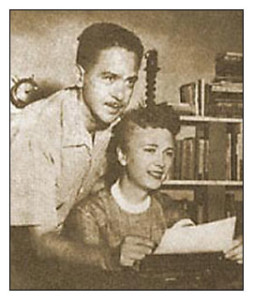 “Three Blind Mice”
“Three Blind Mice”
Originally published in Astounding Science Fiction, June 1945, as by Lewis Padgett
This story takes place about a generation, maybe two, after the events of the first story, “The Piper’s Son”. The stories in this series present the highlights of the history of the Baldies for the first two hundred and fifty or so years after their mutation brought them forth. As in the last post, there will be spoiler below the READ MORE link.
David Barton is a big game hunter who captures animals and brings them back to North America (the US no longer exists as we would recognize it) for various zoos. It’s how he has managed to adjust and adapt to his mutation. He’s channeled is aggressiveness into something product, an accomplish necessary for a Baldy to survive.
The story opens with him bringing a load of animals to a town in the rocky mountains. He’s flying in, looking forward to having catfish at a restaurant he knows, when he’s contacted telepathically by a woman he’s not met before. Her name is Sue Connaught, and she wants to meet him in person.
They arrange to meet, and Sue tells David that there is a new frequency that a trio of telepaths are using to communicate, one that none of the other Baldies know about. None except one girl named Melissa Carr. The three men who have discovered this new wavelength aren’t aware of her. They’re planning on forming an organization to overthrow normal humans. This is a threat to Baldies everywhere. Melissa either doesn’t know or won’t say how she can pick up their thoughts, just that she has and she’s scared. She reached out to Sue, and Sue found out about Dave from a mutual friend. Sue doesn’t know much about Melissa. The girl is not what you could call forthcoming.
The problem Dave faces is that if anything happens to one of the men, the Three Blind Mice of the title, the others will be alerted. They aren’t in the same location. Dave uses the mutual friend he shares with Sue to find out about the first man. He appears to be the weak link in the trio.
Baldies don’t duel. It would give them an unfair advantage over ordinary humans. But they can duel each other. It’s not normally done, but there’s nothing that says it would be unfair. David challenges the first man to a duel and wins, but he’s not able to keep from revealing himself to the other two. They come after him and Sue. David is flying back to protect Sue when his copter is taken down by the other two men.
Fortunately David is able to force the crash landing of both their machines into the zoo. And David is an expert at dealing with animals.
I was a little disappointed that Kuttner skimped over the events in the zoo, jumping ahead to show David victorious. It would have been nice to see what he did with a contest among telepaths in a zoo where the thoughts and blood lust of the animals complicate things. Maybe Campbell and Kuttner had discussed the story or the series before Kuttner wrote it. It wouldn’t be the first time Campbell had planned out a story or series with an author. If so, there may have been a word limit in play that caused Kuttner to trim the story at the end.
This wasn’t a bad story. It was lacking the element of horror some of Kuttner and Moore’s serious work has. Moore is credited as coauthor on the ISFDB, but when the stories were collected in book form, Kuttner was listed as the sole author, which is why I’ve tended to stress his writing over Moore’s in this series. “Three Blind Mice” isn’t an action tale, although there’s some action in it. It’s more of a thought piece, speculating about what kind of world would result from a mutation that produces telepaths.
The next story in the series is “The Lion and the Unicorn”, which is what we’ll look at next.

